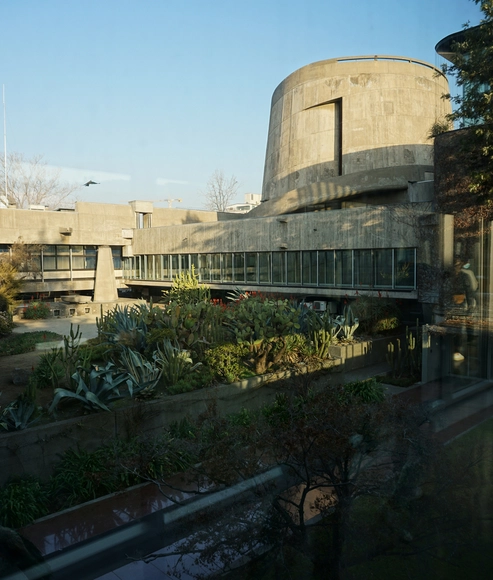
-
Architects: Prisma Arquitectura
- Area: 250 m²
- Year: 2024
-
Manufacturers: Aluar, FV, Silma, Sitex, ferrum
If you want to make the best of your experience on our site, sign-up.

If you want to make the best of your experience on our site, sign-up.



On the banks of the Amazonian river Piraí, the rings and canals of Santa Cruz de la Sierra not only enclose buildings of Bolivia's contemporary and modern architecture (curious examples of formalist rationalism, brutalism, and postmodernism are evident here) but also include a part of its diverse ancient and everyday architecture: from a historic center with endless arcades and colonial mansions to local markets and sheds such as the pahuichi cruceño.
On the occasion of the Latin American Architecture Students Meeting (ELEA) where we were invited to provide on-site coverage, we encountered ten of these places that can help you get a general overview of the city and its heterogeneous architecture.

Mar del Plata is an obligatory reference to the Modern Movement in Argentina. Not only for being the scene of some architectural classics such as the House on the River, the Parador Ariston, or the Terrace Palace but also for the Cementerio Parque designed by Horacio Bucho Baliero and Carmen Córdova in the 1960s.

In recent years hair salons and barbershops have begun to incorporate different activities - a programmatic hybridization almost necessary in today's service economy.
Several architects have been commissioned to propose alternatives to the standard beauty salon/barbershop to not only address an efficient configuration but stunning interior aesthetics.
Take a look at 10 barbershops and beauty salons with their plan and section.

The building on the corner of Suipacha and Paraguay Streets in the city of Buenos Aires, designed by the Spanish architect Antonio Bonet, established from its realization the basis to begin certain reflections on international modern architecture in the Argentinian context of the 1930s.

In the central Recoleta neighborhood of Buenos Aires, in a large lot between Austria Street, Agüero Street, and Del Libertador Avenue, stands the current building of the Mariano Moreno National Library, designed by architects Clorindo Testa, Francisco Bullrich, and Alicia Cazzaniga.
Built on the basis of the project that won first prize in a national competition in 1961, and completed in the early 1990s, it has become a landmark of modern Argentine architecture and an example of the variant of 20th century expressionism known as "brutalism".



Eva Franch I. Gilabert is one of the three artistic directors of Model. Barcelona Architectures Festival, together with Beth Galí I. Camprubí and José Luis de Vicente. The first edition of a project that has taken the city of Barcelona as a place for experimentation and debate.
From the 5th to the 15th of May, they took the public space and transformed it into both a playground and platform for international voices, local architects, policymakers, politicians and citizens, to engage and discuss what the future of Barcelona and other cities could be.

On the 5th of May, the first edition of Model. Festival of Architecture of Barcelona was inaugurated. An event organised jointly by Barcelona City Council and the Architects' Association of Catalonia (COAC) that brings us closer to experimental architecture and helps us to rethink how we want to live together through new city models and new imaginaries.

Located in a particularly natural setting in the city of Mar del Plata, the "Casa sobre el Arroyo" (House on the River) - known as the "Casa del Puente" (The Bridge House) - is considered a paradigmatic component of 20th-century architecture and an obligatory reference of the Modern Movement in Argentina and Latin America.
The house designed by the Argentinean architect Amancio Williams, commissioned by his father, the musician Alberto Williams, is constructed evidence of the capacity to establish a link between the modern rationality of human beings with nature and its topography.

An inflatable and soft body—a silver balloon—scatters towards the sidewalk in the heart of Santiago, Chile. People walk by touching the strange artifact, curiously looking at the object moving over the public space. Behind the pillow, the Gabriela Mistral Gallery disappears.

On March 9, what would have been Luis Barragán's 119th birthday, we commemorate Mexico's most celebrated architect and discuss his winning of the 1980 Pritzker Prize.

In only a few years, Italian-Argentine architect and engineer Francisco Salamone developed more than 60 buildings throughout the small towns of Buenos Aires Province as a part of the conservative government's push to develop the province's municipal buildings.